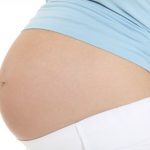Pregnancy after 35. Advantages, statistics, risks
Currently, more and more women give birth after 35, and even after 40 years. According to statistics, nowadays women get pregnant after 35 three times more often than twenty years ago, and the average age of primiparous women in developed countries is now close to 30 years.

In different periods of human history, the idea of the most favorable pregnancy age changed a lot. Even now, there are differences in opinions in different countries and for each nationality. In times of antiquity and in the middle ages, the pregnancy-border-age was the age of 20, after which, a woman was believed to be too old for pregnancy.
Now about 20% of women become mothers for the first time after 35 years.
This is interesting:
The world’s oldest mother was Indian Omkari Panwar, who gave birth to twins (!) at the age of 70 in November 2008. Omkari carried the pregnancy herself, but she used a donor egg and her husband’s sperm for conceiving. Her husband was 77-year-old Charan Singh Panwar.
Why do women become pregnant after 35 more and more often?
The reasons that more and more women make the decision about pregnancy after 35 are on the surface. A modern woman first gets an education, then builds her career, then reaches a certain level of wealth and only then she begins to think about a baby. Now she takes the decision to get pregnant more consciously.
Very often the decision to have a second child after 35 comes because of the second marriage. A woman wants to have a baby with her second husband.
Also long waiting for Mr. Right is among frequent reasons for pregnancy after 35.
Sometimes, after giving birth to the first child at 18−22, a woman devotes herself to career and reaches a higher standard of living. Now she’s ready to have a second baby.
Another reason of pregnancy after 35 is that there are many women who just can’t conceive without medical help. Sometimes medical treatment and pregnancy preparation takes time.
[customscript]snbf_slideimage_src[/customscript]
Pregnancy after 35 — Statistics.
According to statistics, 96% of babies born to mothers after 35 are healthy. But if you are in doubt, just have some more medical research.
Quite often you can hear that women after 35 are at a very high risk of delivering a child with Down Syndrome. But statistics show that this risk is surprisingly small at all ages. For women after 40 the risk to have a child with Down Syndrome is 1%. For women after 30 — 0,1%. Doctors can diagnose Down Syndrome in a fetus in the 10−12 week of your pregnancy.
There is no consensus among doctors regarding the risk of late delivery. However, there is some data that should be considered when making a decision about pregnancy after 35 or 40 years. In Mount Sinai Medical school in New York, the data was processed in 4000 pregnancies. The results show that «late» mothers deliver babies in time and the babies have the same points by Apgar scale at birth as babies delivered by young mothers.
Advantages of pregnancy after 35.
A child born after 30 years is usually a result of a carefully planned pregnancy. Mature women are more serious and have a more responsible attitude to pregnancy and childbirth. They are planning their pregnancies; they regularly visit the doctor and follow all the recommendations.
Most women become emotionally ready for motherhood by the age of 30. So women who became pregnant and gave birth to a child after 35 years of age perceive their condition more positively and are less likely to get depressed. They pay more attention to healthy nutrition and education of their kids. A woman of this age considers her child not as a burden, but as a great gift. She gives him more attention, time and effort.
It is believed that pregnancy and delivery after 35 rejuvenate a woman. And the reason for this is hormones of pregnancy — mainly estrogen — which tones muscle tissue, giving them elasticity, strengthens bones and reduces the risk of hypertension. Psychologically the woman who gave birth after 35 feels younger because now she is a «young mother», and this status contributes to psychological youth.
The life expectancy of women who gave birth after 45 years is significantly higher. Scientists in «Hadassah Ein Kerem» hospital in Jerusalem found in women, who have conceived a child naturally after 45 years, the genes that delay the aging process.
An interesting study was also conducted on the basis of the history of aristocratic families of England. Records of more than 13 thousand women, who lived from 740 to 1875, were analyzed. Those who got their first child at a later age lived on average 15 years longer than young mothers. Dr. of biology Stephen Stonehenge notes that, according to the observation of many scientists, women, who become first-time-mothers at the age of 40, have a high chance to live to a hundred years.
«Late» delivery is beneficial to the health of the woman. After late childbirth, menopause problems are easier, climax can come later, and aging process is perceived less painfully. Late delivery can low your cholesterol, and reduce the risk of stroke or osteoporosis. «Late» moms, generally, have fewer problems with hearing and fewer urinary tract infections. Late delivery «shakes» and refreshes the body.
Disadvantages of pregnancy after 35.
Healthy women aged 35−40 years are, unfortunately, are not very frequent phenomena. At forty years, a woman has, as a rule, several chronic diseases. Her ovum is very sensitive to any changes from the outside, and it accumulates all information about the woman’s diseases. At 40, fertility decreases and the risk of ectopic pregnancy increases.
The risk of having a child with Down Syndrome Increases. It is known that almost 70% of all children with Down Syndrome were born to women older than 35 years. The likelihood of Down Syndrome and other genetic damage to the offspring of 40-year-old women increases up to 12−14 times, children with heart defects are born 5−6 times more frequently to women after 35. But all these are not the reason not to plan a baby after 35. As I’ve already written, 96% of babies born after 40 are healthy.
If you are over 35 years, have an additional screening for detection of Down Syndrome.
Due to insufficient production of hormones during pregnancy women after 35 may have a variety of complications… or may not… Among the most common complications are:
- risk of miscarriage,
- preterm or post-term pregnancy,
- toxemia of late pregnancy (preeclampsia),
- premature discharge of amniotic fluid,
- uterine inertia.
Cesarean section is more common among women after 40. This is because at this age the tissues of the female body become less elastic and do not allow the full opening of the birth canal, in particular, the cervix. This may provoke asphyxia during the final moment of birth.
The number of surgical interventions during childbirth after 35 increases sharply. Approximately every fourth woman at this age has a cesarean section.
Often problems arise in the postpartum period: bleeding, infection. After cesarean section, there are often difficulties with lactation and breastfeeding.
But even with these potential problems, pregnancy after 35−40 years is not a problem, if you want it. You should only be very carefully prepared. Before conception, just pass all medical examinations to carefully monitor your health. Give up bad habits in advance, do physical and breathing exercises to maintain your health, regulate your psychological state. Be sure, your body will show its hidden reserves during pregnancy and childbirth.
It is also necessary to find doctors who will support you without reminding you of your age each time you come for a consultation.




